|
Blog Feeds
The SakerIndymedia Ireland is a volunteer-run non-commercial open publishing website for local and international news, opinion & analysis, press releases and events. Its main objective is to enable the public to participate in reporting and analysis of the news and other important events and aspects of our daily lives and thereby give a voice to people.
Public InquiryInterested in maladministration. Estd. 2005
Human Rights in IrelandIndymedia Ireland is a volunteer-run non-commercial open publishing website for local and international news, opinion & analysis, press releases and events. Its main objective is to enable the public to participate in reporting and analysis of the news and other important events and aspects of our daily lives and thereby give a voice to people.
Lockdown Skeptics
|
Runaway Global Warming May Have Started. Has Arctic Methane 'Bomb' Just Gone Off? international |
environment |
feature international |
environment |
feature
 Sunday March 10, 2013 22:31 Sunday March 10, 2013 22:31 by T by T
 2012 Measurements show dramatic rise in methane emissions from the Arctic
All the worry about Global Warming has tended to focus on carbon dioxide emissions but the real threat may be methane emissions.... In the past 5 years there have been major changes happening up in the Arctic. The annual summer melt of the sea ice floating on the Arctic Ocean has greatly increased, exposing a much larger area to heating during the summer months which in turn has warmed the ocean enough that the frozen methane hydrates on and below the seabed are beginning to melt, causing methane gas to bubble to the surface. The trouble is methane is up to 100 times (over initial 20 year period of release) more effective than carbon dioxide as a greenhouse gas and the estimated quantity of methane hydrates suggests the amount of carbon contained in them exceeds all the coal, oil and gas burned so far. And should the tundra melt in Siberia then the huge area of peatland will resume decomposing thereby emitting a very large quantity of carbon dioxide. This scenario would take us past extinction danger point which is reckoned for a rise of 6oCelsius or more would be close to certainty.
Related Indy Links:
Study: Arctic sea ice decline may be driving snowy winters seen in recent years
| Arctic Sea Ice Shrinking At 'Unprecedented' Levels
| Special issue on the Arctic: After the ice
| Arctic sea routes open as ice melts
| Arctic Turning into a Sea of Foaming Methane. Positive Feedback has kicked in
| The Arctic has already measurably warmed over the past three decades, but this albedo flip from white ice/snow reflecting up to to 85% of the warm sunlight to a dark ocean that only reflects 15% or in other words absorbing 85% means the process is feeding back on itself. Combined with the extra warming caused by a rapid rise in methane emissions, it appears we are on the cusp of runaway climate change. Scientists involved with monitoring the Arctic are so alarmed and concerned that a group of them formed the Arctic Methane Emergency Group earlier in 2012 to draw attention to this critical situation and in the hope that something will and can be done. Regrettably due to capture of the political process and of the shaping of public opinion by the Coal and Oil & Gas industries there is a very high probability that exactly nothing will be done. There is a small chance with an all out war-type footing effort that some form of geo-engineering effort might mitigate the methane emissions, but given the vast area over which methane emissions are already occurring, it is likely that it is already far too late and we will be well into the depth of the dynamics of this process before there is any sort of realization emanating from a concerned public who will have by that stage managed to partially see through the decades of propaganda on just that particular topic as opposed to all the other daily lies and distortions from the media about many other aspects of society. This may not be the first time this has happened on Earth. Back in the late 1970s when it was first suggested that a meteorite caused the extinction of dinosaurs 65 million years ago because of the discovery of a relic meteorite impact zone in Central America matching that time; this theory was then applied to most other extinctions, but it triggered a flurry of science in this research area. Gradually it was realized that not all extinctions were of meteorite origin and in the case of the Permian extinction 250 million years ago where 90% of all forms of life were extinguished not just on land but in the oceans, it has since been determined this was very likely caused by a rapid heat pulse. The most likely culprit identified is methane. Another extinction event 55 million years ago known as the Paleocene-Eocene was also accompanied by a rapid heat rise. Again methane is thought to have been the trigger although there would have been other processes occurring to initiate the warming in the first place to then trigger the sudden release of methane clathrates.
So there appears to be a precedent for this and the numbers at the present time unfortunately add up. The observations and feedback effects that we are seeing already are:
Turning now to the actual data, this is the situation as it stands. The Arctic sea ice grows and wanes with the seasons each year and as expected tracking the long dark winter nights and long warmer summer days with the maximum melt occurring typically in September at the end of the Arctic summer. This has been tracked by satellite every day every year since 1979. Over the last decade, more and more of this ice has melted each summer with 2007 smashing all records up to last year (2012) when it was broken again. Compared to the 1979 to 2000 average where the minimum extent was roughly 7 million square kilometres, this had fallen 3.5 million sq km (see figure 2). At the same time the average thickness of the ice has thinned. The ice used to be several meters thick and consisted of ice from 1 year old to 5+ years old. Now most of the multi-year old ice is gone and the bulk of it is only 1 year old. Given it is so young it has less time to grow and therefore is much thinner making it easier to break and melt. The thinning of the ice has been happening steadily since the 1980s and is thought to have been melted by warmer ocean penetrating the Arctic and melting it from below and the steadily increasing air-temperatures above doing the job from that side. Normally the Arctic tundra (Fig 3) which is composed of the vast areas of Northern Canada, Alaska, and Siberia would have snow on the ground for much of the year. This snow cover has been melting too and getting smaller with a result that as the dark soil and vegetation is exposed a much greater load of heat could be absorbed during the summer months and this has resulted in feedback on the melt process and increased air-temperatures. And from figure 4, it is evidently accelerating. At one time it was thought we would have an end of summer Arctic ocean free of ice in 2070. Given the actual changes, the IPCC model is now saying in 2030 but this is wildly optimistic and the data itself (Figure 2) strongly suggests it will be in just 3 years time in 2015. However it is not a case that bad things start happening in 2015. They are already happening now. Vastly increased areas this year and for the last few years have already been absorbing and storing huge quantities of solar energy in the Arctic ocean and heating it. It then takes time for this heat to dissipate over the winter. Turning to the methane hydrates also known by the name methane clathrates, these exist in the permafrost and in the frozen muds on the seabed. They are actually crystals of water and methane molecules and they are stable below 0°Celsius. Deposits occur throughout the Arctic along the huge expanse of shallow seas along the East Siberian Shelf and in deeper waters around Svalbard off Norway and around Greenland and Northern Canada. In the shallow seas the methane can escape directly to the atmosphere with little absorption by the water but in deeper waters it can be oxidised and or absorbed more although if there is too much it can be saturated in the water and therefore escape beyond that point. When the methane reaches the atmosphere it typically has a lifetime of 20 years and is broken down by free reactive hydroxyl (-OH) molecules in the air. If the hydroxyl level falls then the methane hangs around longer. And given that hydroxyl molecules are formed from ozone then any reduction will have negative effects. The hydrates remain in place so long as the seabed temperature does not rise above zero and the water temperature too. Because of the presence of salt in sea water, the water temperature can be still liquid slightly below zero Celsius. The sea-ice effectively puts a cap on the whole thing keeping warm sunlight out and the Arctic ocean temperature cold. The wind also has little influence and so there is little disturbance or mixing to the water and because it has been this way for a very long time, it is separated into stable layers with the net effect that historically no heat was reaching the seabed to cause melting. This is no longer the case and greater mixing is happening. During research cruises off Siberia from 2003 through 2008 Russian scientists detected saturated levels of methane at numerous depths and elevated levels in the atmosphere. Reports of hundreds of plumes of bubbles tens of meters across rising from the seabed off the Svalbard archipelago also began to appear in 2008. In 2012 the Russian scientists had found methane bubbles plumes 1 km across over a wide area. It seems emissions have increased dramatically. But as it so happens there is a satellite called AQUA, launched in 2002 that is capable of measuring methane in the atmosphere and the data it is producing backs up the in-situ ground/sea observations. The series of images in figure 5 show the differences between 2008 and 2011 for November the figures for December 2012 while figure 6 shows measurements made in-situ (i.e. on the ground/sea) with a large increase in 2011 and 2012. One could argue that maybe these in-situ figures are just an anomaly in that area but the satellite measurements show it is across the board. And should we wait until all the readings have gone off the scale before reacting? It seems some scientists who are not even GW deniers are taking that approach and it is most likely because they are terrified of being called alarmists.
Research led by Natalia Shakhova detected significant methane emissions from the East Siberian Arctic Shelf which is only about 50 meters (164 feet) or less deep and these emissions equaled total emissions from all other world oceans. The study, published in Science, found that more than 80% of the deep water and more than 50% of surface water had methane levels more than eight times that of normal seawater. In some areas, saturation levels reached more than 250 times that of background levels in the summer and 1,400 times higher in the winter. In other words the methane has been bubbling out and absorbed by the water. Shakhova said: "The release to the atmosphere of only one per cent of the methane assumed to be stored in shallow hydrate deposits might alter the current atmospheric burden of methane up to 3 to 4 times."
Existing weather polar orbiting satellites are capable of measuring the sea-surface temperature and this data too has been showing increases and the anomalies appear to be strongest in the very areas where measurements show methane emissions are highest. This would seem to confirm that at a local level the methane is already having enhanced regional warming effect. Figure 5 shows one such set of measurements for November 2011. The long term increasing temperature trend is shown in figure 8 and an exponential curve is fitted to it to show where it might be leading. The sea around Svalbard (Spitsbergen) is one such place where it has warmed and in the daily sea-ice cover maps generated by the National Snow and Ice Data Center, this is main area that is having trouble freezing over during the annual winter freeze. In figure 9 the orange line represents the sea-ice boundary and the white areas are obviously sea-ice extent on that date. As can be seen a huge area remains exposed (as of Jan 10th 2013) and this means as soon as the sun returns in spring, this will be absorbing sunlight whereas normally this might not occur until much later in the summer. Since then much of the area has since frozen over but this will be very young and thin ice that will quickly break up and melt come the spring.
To give some perspective to this, another few facts need to be considered. To just turn ice that is very slightly below 0°C into water requires 334,000 joules of energy for every kilogram or basically for every one litre of water. However the same quantity of heat applied to water at 0° would bring it to 80°C. This means that once all the sea-ice is melted over the entire Arctic ocean in the summer in a few years time, then 100% of this heat will go into heating the water. Now this is not to suggest it will raise it anywhere near 80° because one year old ice was about 1 metre thick whereas the water varies from 50m to 100s of meters in depth and so the volumes are far greater and the same quantity of heat is therefore spread much thinner leading to a smaller overall temperature rise. But while the ice capped the ocean, no heat would have been entering from above, and this changes dramatically with it removed and in the process allowing winds to stir up the ocean and completely changing the weather in the Arctic. Indeed last Aug 2012 a huge stormed churned up the Arctic Ocean for several days battering what remained of the sea-ice. See Huge Cyclone Batters Arctic Sea Ice. You are now entering the non-linearity zoneThese are extracts from a blog entry by scientist Paul Beckwith. Full text is herePush something and it moves a little. Push it a little more and it moves a little more. This is called a “linearity” response. But sometimes a little push can lead to something totally unexpected! This is called “nonlinearity” and, contrary to what one might think, nonlinearities are inherent in most systems - like our atmosphere, for example. In fact, abrupt and unexpected change happens at some point in most systems - we even have a saying for such unexpected outcomes: a tipping point. Until recently, our atmosphere and oceans behaved like linear systems: incremental dumping of greenhouse gases into the atmosphere caused incremental changes, like rising temperatures and predictable rates of ice melt. But things are now changing unexpectedly fast – nonlinearity is kicking in! We only have to look at the rapidly vanishing arctic icecap for astonishing evidence........... ....... The rapidly disappearing Arctic icecap is a tipping point in motion. In all likelihood, statistically speaking, it’s gone, history. Within a few years when the ice disappears entirely, for the first time in 3 (or as many as 13) million years, hold on because our weather patterns will be drastically destabilized. Most folks in my field are still reluctant to acknowledge this 800 pound gorilla staring us right in the face..... The difference in temperature between the equator and the poles is the engine that drives the climate / weather system and causes the winds to blow towards the poles. As part of that dynamical process, each hemisphere of the Earth has three main atmospheric circulatory cells and they are the Hadley cell from the equator to the tropics (~ 30° North/South, the Ferrel cell generating the westerly winds between the tropics and approx 60oN/S and the Polar cell which contains cold polar air. The polar jet stream separates the mid-latitude mild air-mass from the cold polar air-mass and in the process keeping the cold air within the Arctic for most of the time. Nearly all the storms and cyclones in the Atlantic track the position of the polar jet stream. It forms a high speed wind that circles the globe (at 60N/S) and fluctuates to some degree due to atmospheric (Rossby) waves that pass along it. However as the temperature difference becomes less due to warming in the Arctic, the intensity of the jet stream winds reduce and this has been observed in the past decade or so. Because it is weaker it is less stable and larger waves can be induced in it and this has resulted in warm air masses penetrating further into the Arctic. The reverse has also occurred where large tongues of polar air have reached further southward than normal and the two cold spells (over Europe including Ireland) in November and December in 2010 are an example of this. (See figure 10 for an illustration of this jet stream weakening where it swung south and pinned hurricane Sandy drawing it Westwards inland instead of the typical track North and Eastwards). As a result of this weakening, the Jet Stream is also becoming stuck over geographical features. Again the series of wetter summers over UK and Ireland in the past 5 years are examples of blocking actions, where the same persistent pattern is stuck over the same place. The contrary is that other areas suffering hot dry periods had these conditions persisting too. It is these very conditions that led to crop failures in the Russia in 2010 and in USA in 2012. In figure 11, produced by Complex System Institute they demonstrate the linkage between crop failures, food prices increases and food riots and social unrest. This weakening effect of the polar jet stream is pretty much documented at Sea level pressure changes since 2007 where a series of average monthly pressure charts are presented and two of the charts are shown below in figure 12 and they depict for air pressure in June 2007, 2008, 2009 and 2012 and differences compared to the average for the period 1948 - 1978. A persistent low pressure is evident over UK and Ireland and these correspond to the very wet summers of those years. This ties in with the idea of the jet stream getting stuck in a blocking pattern. It should be clear then that the measurements from weather stations, research cruises and data from satellites leave no doubt that major changes are occurring and with increasing rapidity and while many scientists even at this late stage will hedge their bets for fear of losing their jobs, it is quite clear to me and obviously to those who formed the Arctic Methane Emergency Group that we are already at the beginning of runaway Climate Change/Warming. We are well past the point of that frequent phrase we hear trotted out so often in the media to calm everyone down that there is 10 more years or 5 more years. These are excuses to continue as we are. 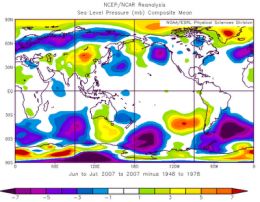
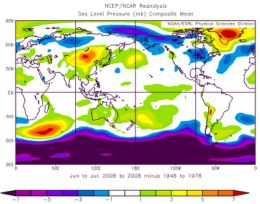
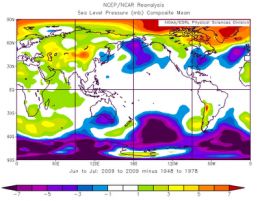
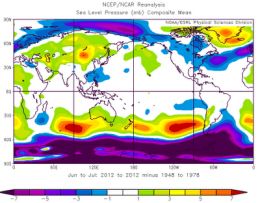
Fig 12: North Atlantic Sea Level Pressure for July-June 2007, 2008, 2009 and 2012 compared to 1948-1978 average.
Note area of low pressure over North of UK & Ireland and high over Greenland And whilst I was never a fan of geo-engineering in the vain hope that the right thing would be done, I would have to concede that there is now no option. It goes without saying though that this should nor cannot be a solution that allows business-as-usual. The predatory capitalist system cannot co-exist with an viable planet and we should not forget that the old Soviet system in the USSR was vastly wasteful of energy and thus had high emissions and destructive of resources too. We are faced with triple problems and they are 1) tackling the climate, 2) destroying the present dominant political-economic system and 3) fixing 1) and replacing 2) with a sustainable system. We could add a third problem which is the ongoing ecological problem but we will leave that aside here for the sake of brevity. At a minimum, should geo-engineering be taken on, then at the same time the entire functioning and structure of society would need to be rapidly changed to make use of the time that geo-engineering would buy. The key challenge is that any complex society of whatever political form by its very nature uses a lot of energy and resources and yet a way has to be found to change this even though it appears to be an inherent property of such systems and therefore it is possible that you can't have a complex society with low energy use. (See for example: The Collapse of Complex Societies by Joseph Tainter). It may be impossible but there is no option but to try and the only way to reduce energy and resource usage is by greatly increasing sharing and in an urban environment the most obvious way would be to switch as much transport as possible away from the current form of the private car into walking, cycling and mass public transit. One way to encourage this would be to expand it and make it free. For example in the case of Dublin Bus, there are only about 2,000 buses to serve close to a million people so quadrupling the number of buses to 8,000 would give a vastly improved service and yet the same city probably has in the region of 300,000 cars. So the saving in all the fuel, resources and emissions to serve those vehicles would be huge -if replicated across every major city. Another change would be to set a very high standard of energy use for all buildings and then have them retrofitted to meet that standard. In parallel to a global scale program to reduce energy usage, there would also be a need for a wartime type like effort to further increase renewable energy whilst at the same time quickly phasing out fossil fuel usage although that is not necessarily as technically easy as some proponents would say it is. But the changes would not stop at energy usage because land usage and other effects of society on the environment would have to dealt with too. For example it may be necessary to rapidly increase the level of forestry and reduce agricultural land to increase the size of the carbon sinks again. Given it takes 10 kg of plant material to generate 1 kg of meat then this implies a reduction in the consumption of meat to offset reductions in agricultural output but still providing enough. However while these appeals to rational behaviour are all fine, we all know that none of this is likely to happen. What person now is going to want that level of change, demand it or support it if to them it just seems that the weather is either a bit milder, wetter, dryer or hotter? Besides the enormous powerful vested interests that would be challenged and who would use the forces of the State to batter anyone into the ground. No, it is only when agriculture has been so disrupted by weather that is unseasonal and unsuitable to the conditions for crop growth, followed by the associated unrest that the political base for that sort of change could begin to form. Yet for things to get to that stage, we would be even further into runaway climate change and higher up that exponential curve in figure 8. It is thus hard to see how anything can be done and will be done. Humans are just not good at getting worked up emotionally over abstractions like global problems and react much better to immediate and in your face events. Probably the only way to stimulate responses to these more abstract issues is through saturation propaganda and this implies a very unsettling, dangerous and unreliable way to solve it because this is the same technique used to send millions off to war or to buy overpriced property or most ironically to be prolific consumers. It is the very same politicized tool that has played a major role in us getting to our situation. The only way to break the reckless, suicidal and immature behaviour of society as it lurches forward in a stupor towards multiple fatal global problems is to get on a sustainable path and break the stranglehold of the present system is for people everywhere to be far more aware, mature, educated and not just in the academic sense but in the life and nature sense and to be clued in and empowered enough to want and be able to make rational informed decisions. So the real challenge is getting there. The current capitalist system has managed to create a largely narcissistic dumbed-down society where people invest all their intellect and attention in having encylopaedic knowledge of unimportant trivia because by virtue of saturation trivia it is a way of saying to people there is nothing to worry about, everything is working fine and all you have to worry about is watching this TV SOAP or following the daily life of these vain celebrities. Because if there really was a problem then surely this shit wouldn't still be broadcast and since it is, then all is generally fine. In the meantime back in the real world massive problems loom but since the system in control can't deal with them, it denies them and shuts them out for everyone else. These problems also are a threat to their power and status because it should be clear to anyone that solving them requires a radical overhaul of the structure of society. We can't blame this solely on the capitalist system although it is really a creditism system since it has been debt fueled for quite awhile because the same dynamics would probably apply to any form of hierarchical power group whatever political label was used on it. Alas, there is no time for these changes to happen to get us where we need to be. It is too late. So one ought to consider whether we are just another failed natural experiment at trying to make the transition from individual intelligence to collective intelligence whilst grappling with the Pandora's box opened by technology and take on the inherent responsibility to not just ourselves but the wider biosphere that comes with attaining great knowledge. From an outside perspective it certainly looks like these seemingly inbuilt natural challenges are a way of preventing the lunatics and psychopaths escaping from the asylum which in our case is the Earth itself. And so just like over the course of evolution, many species have tried out different forms, failed and gone then there is no reason to believe we are not just one of the many failures as statistically this is probably more likely than the successful cases and in this sub-domain of evolution of intelligent civilisations, the testing ground occurs at a much broader scale across entire galaxies with 100s of billions of planets thereby giving it the sheer numbers of trials it needs, in the same way that say one in a billion cells might have the right mutation to acquire some particular capability, to get to the next point in its evolutionary path. Therefore the best you can do is follow the links to blogs and articles provided and at least try and understand what is happening and keep an eye on the Arctic sea ice melt in 2013 and see how things unfold.
Related Links: Definitions
http://en.wikipedia.org/wiki/Latent_Heat |
http://en.wikipedia.org/wiki/Hadley_Cell |
http://en.wikipedia.org/wiki/Jet_stream |
http://en.wikipedia.org/wiki/Methane_clathrate |
http://en.wikipedia.org/wiki/Arctic_Ocean |
http://en.wikipedia.org/wiki/Permian_extinction |
http://en.wikipedia.org/wiki/Paleocene-Eocene_Thermal_Maximum |
http://en.wikipedia.org/wiki/Joseph_Tainter |
Methane-driven oceanic eruptions and mass extinctions |
Wipeout: the end-Permian mass extinction |
Beyond methane: Towards a theory for the Paleocene-Eocene Thermal Maximum
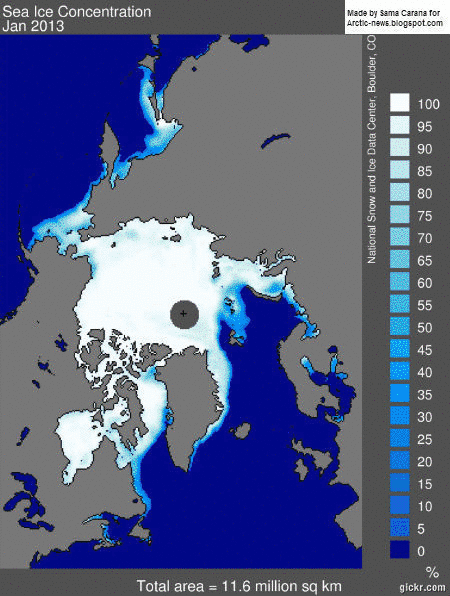
Fig 13: Overlay of areas suffering lack of winter ice or thin ice and methane emissions. Wait few secs for gif image to animate
|























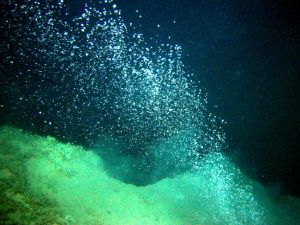
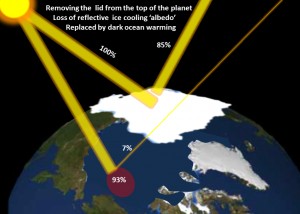
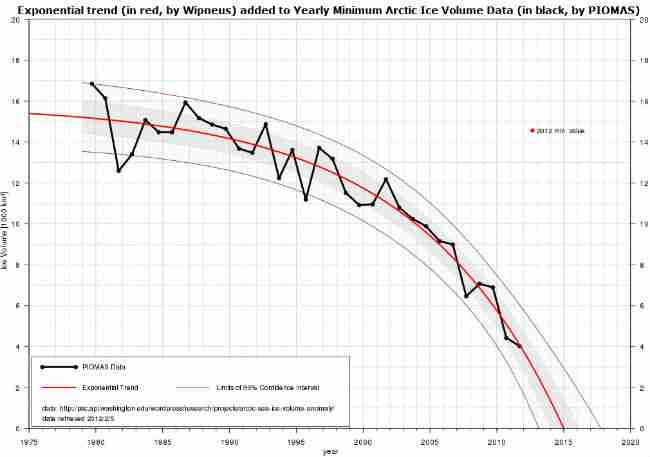

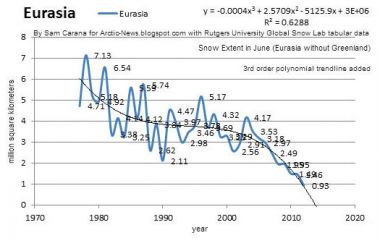
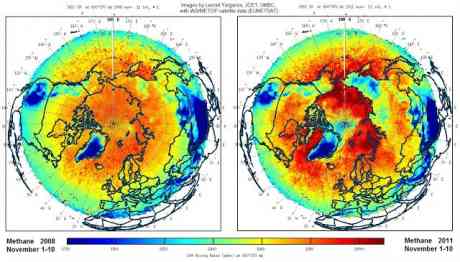
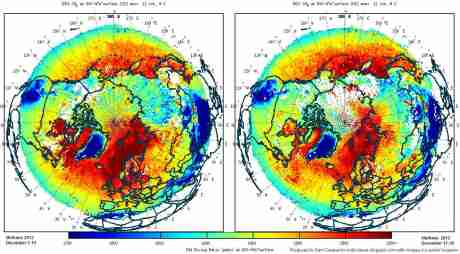
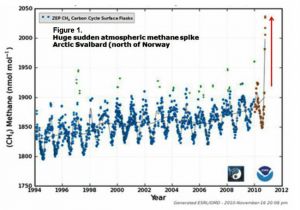
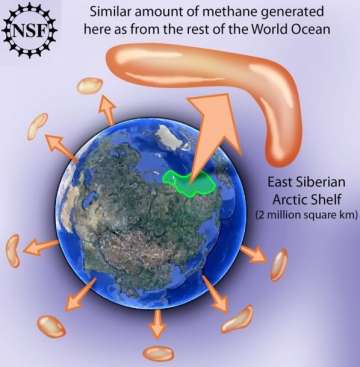
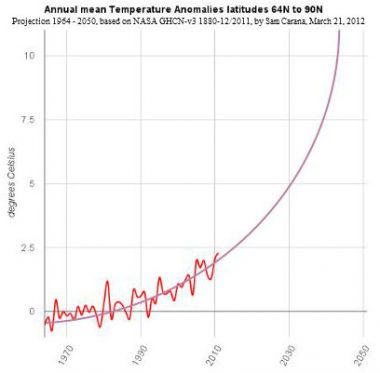
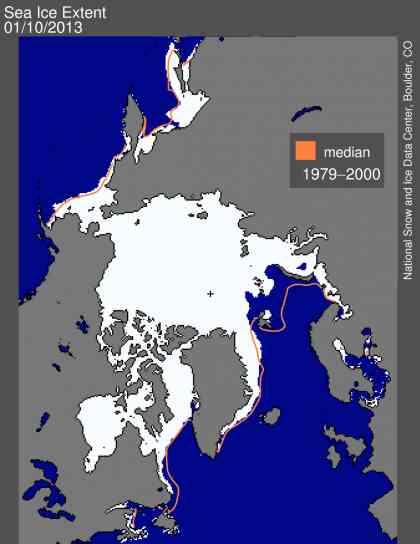
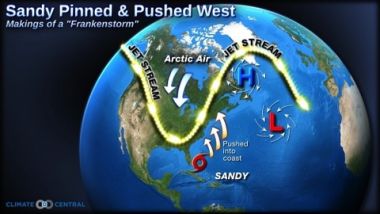
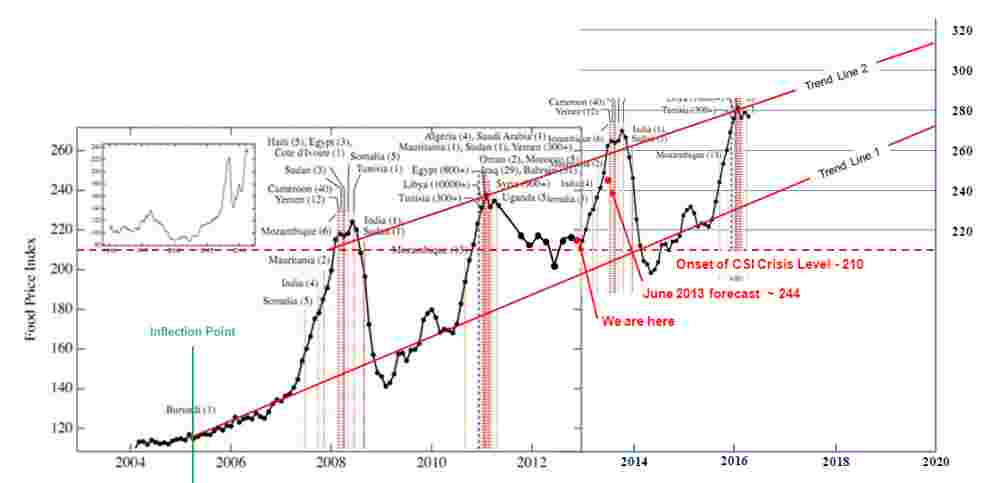
 printable version
printable version

 Digg this
Digg this del.icio.us
del.icio.us Furl
Furl Reddit
Reddit Technorati
Technorati Facebook
Facebook Gab
Gab Twitter
Twitter
View Full Comment Text
save preference
Comments (110 of 110)